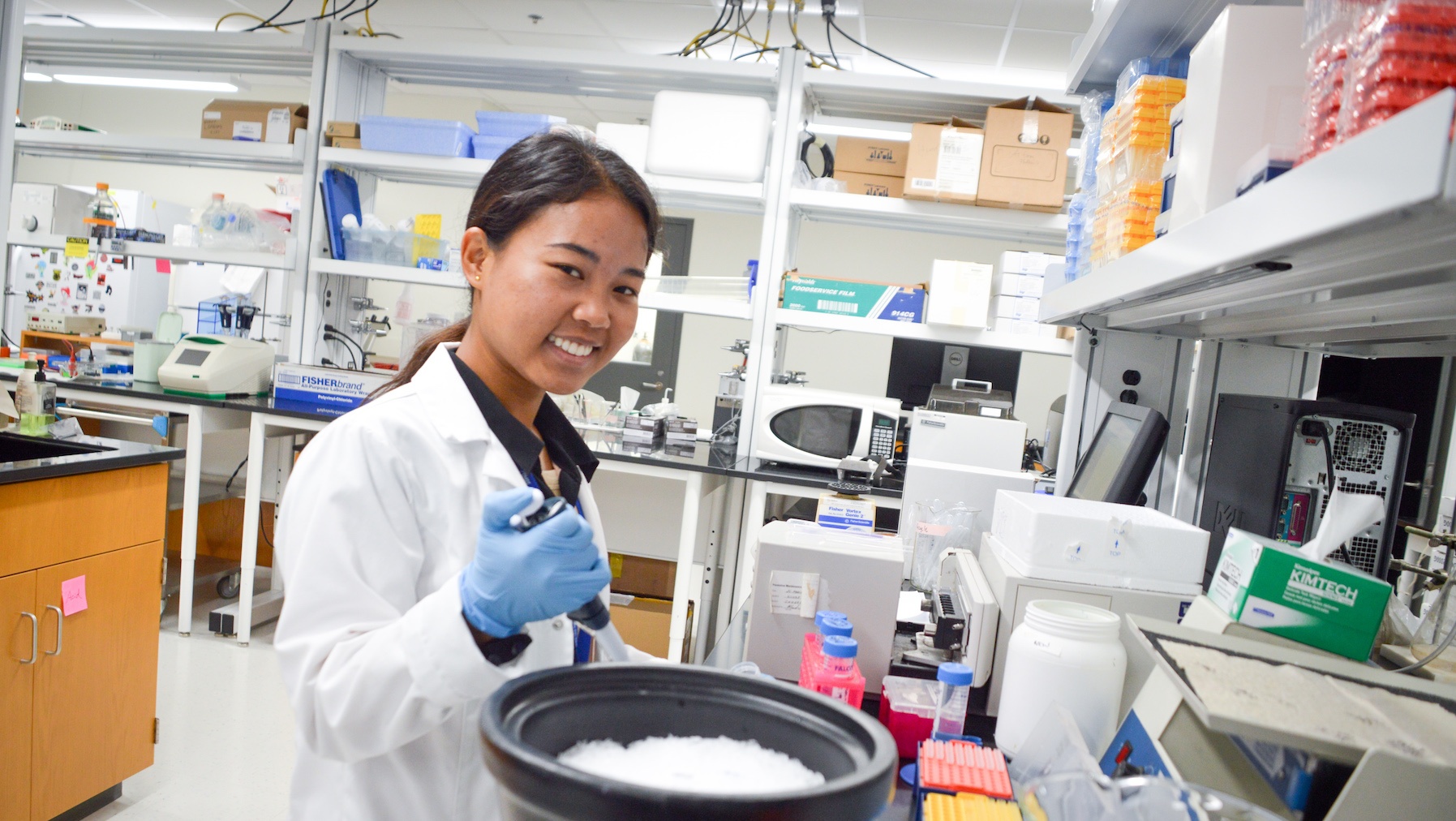Three students from United States military academies have completed a crash course in biomedical research at OMRF.
John Saxon III, M.D., a Muskogee physician and OMRF board member since 2000, established the program to honor his father, a West Point graduate who taught for five years at the U.S. Air Force Academy and was a career Air Force pilot before passing away in 1996.
The John H. Saxon Service Academy Summer Research Program is designed to provide military academy students with an opportunity to work side-by-side with OMRF’s senior scientists.
This summer, OMRF welcomed two standouts from the U.S. Naval Academy in Annapolis, Md., and one from the U.S. Air Force Academy in Colorado Springs, Colo.
Ngun Cer “Mimi” Chin, a Savage, Md., native, is a supply sergeant in the 5thcompany at the Naval Academy. Chin worked with OMRF scientist Kenneth Humphries, Ph.D., on a project to determine how two specific cellular proteins affect how the heart uses different energy sources, specifically glucose and fatty acids.
Chin is entering her junior year at the Naval Academy and is pursuing a chemistry degree.
“This has been a great experience,” said Chin. “I want to be a Navy doctor, and this opportunity has helped broaden my understanding of the behind-the-scenes work that goes into medical research.”
Caitlyn Jungeun Koo is also a junior chemistry major at the Naval Academy, where she is a Battalion Training Corporal and Company PAO Corporal in the 5th company. She is from Sunnyvale, Calif.
Koo worked with scientist Lorin Olson, Ph.D., to understand what makes skin fat cells different from other fat cells.
“I have met great people, learned new research skills and developed a better understanding of the research side of medicine in a very short time,” says Koo.
U.S. Air Force cadet Tara DeGeorge is pursuing a degree in biology. DeGeorge studied under the guidance of Christopher Sansam, Ph.D., working to define the parts of molecular machinery that enable cells to divide in humans. DeGeorge, an Anchorage, Alaska, native, plans to go to medical school or become a pilot.
“The Saxon students are always ready to soak in everything they can in this fast-paced program,” said Saxon Program Coordinator Heather Hebert. “They’re all very impressive and driven students who bring a spark to our labs and remind us the future is bright.”



